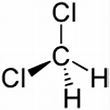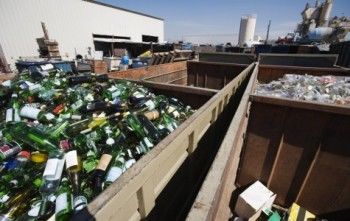Organic Solvent Dichloromethane (DCM) / Methylene Releases Decrease by 58 Percent
In 2014 Massachusetts alleged that four companies were “major sources” of hazardous air pollutant (HAP) emissions of DCM, and each paid fines from $350,000 to $700,000
Dichloromethane (DCM) and methylene chloride (CH2Cl2) is an organic solvent with a number industrial uses. From aerosol propellant to paint remover solvent, it is also used as a process solvent in the manufacture of pharmaceuticals and film coatings, plus it is a solvent for metal cleaning in electronics manufacturing. DCM is also used by pesticides industries, and as a cleaning agent in the urethane foam industry, a degreener for citrus fruits, and also as a fumigant for grains and strawberries. Releases of DCM have been primarily from three industries including plastics and rubber manufacturing, chemicals, and miscellaneous manufacturing, mostly for medical devices. Each industry has reported significant decreases in their releases of DCM over the last few years.
 A colorless liquid with a moderately sweet, pleasant aroma, high levels of DCM exposure can be fatal, and the Environmental Protection Agency (EPA) considers DCM to be a probable human carcinogen. The EPA has been regulating dichloromethane in drinking water since 1974 when Congress passed the Safe Drinking Water Act to protect public health. Reportedly people drinking water with this contaminant could experience liver problems and an increased risk of getting cancer.
A colorless liquid with a moderately sweet, pleasant aroma, high levels of DCM exposure can be fatal, and the Environmental Protection Agency (EPA) considers DCM to be a probable human carcinogen. The EPA has been regulating dichloromethane in drinking water since 1974 when Congress passed the Safe Drinking Water Act to protect public health. Reportedly people drinking water with this contaminant could experience liver problems and an increased risk of getting cancer.
Since 2003, total releases of DCM have decreased by 58 percent due to a reduction in releases to air, which have fallen 61 percent and currently make up 92 percent of all DCM releases. The EPA’s complete hazard summary of DCM is available athttp://www.epa.gov/iris/subst/0070.htm)
During this time, the quantity of total production-related waste decreased by 41 percent, from over 250 million pounds to 150 million pounds. This includes quantities released, recycled, used for energy recovery, and also treated. And the number of facilities that have reported DCM have also declined as well.
Facility closures and reduced production levels may explain why some of these facilities stopped reporting DCM, indicating that these facilities remain active but have eliminated or reduced DCM usage below TRI reporting thresholds.
However, in 2014 the state of Massachusetts alleged that four companies were “major sources” of hazardous air pollutant (HAP) emissions of the chemical methylene chloride (DCM). These companies failed to obtain proper permits and control their hazardous air pollutant emissions, resulting in fines from $350,000 to $700,000 for each company. (Source: WWLP.com.)
This type of violation could have been prevented if these the companies been compliant with their permits for air pollution regulations. This is the reason why ProComplianceWare exists – to help smaller manufacturers avoid the risk of missing deadlines, incurring fines and harming people and or the environment. It is a cost-effective Web-based environmental compliance and risk management system that helps companies remain in compliance to avoid penalties and fines from ever-expanding government environmental regulations.
In 2012 DCM was added as a TSCA Work Plan Chemical and the risk assessment was completed in 2014 for the use of DCM in paint stripping. Now the EPA is initiating rulemaking to address the risks Visit EPA’s TSCA Work Plan Chemicals website for more details. For more information on please email info@ProComplianceWare, and one of our sales representatives will get in touch very soon.











Leave a comment